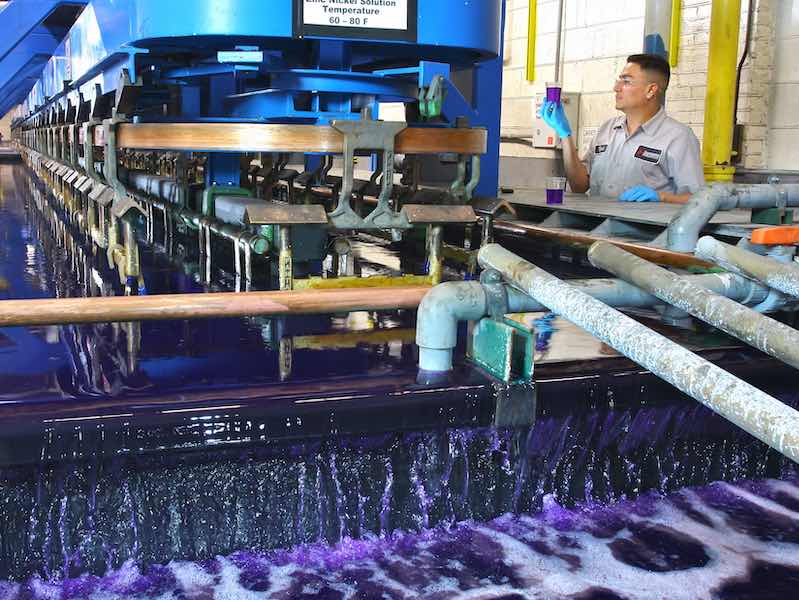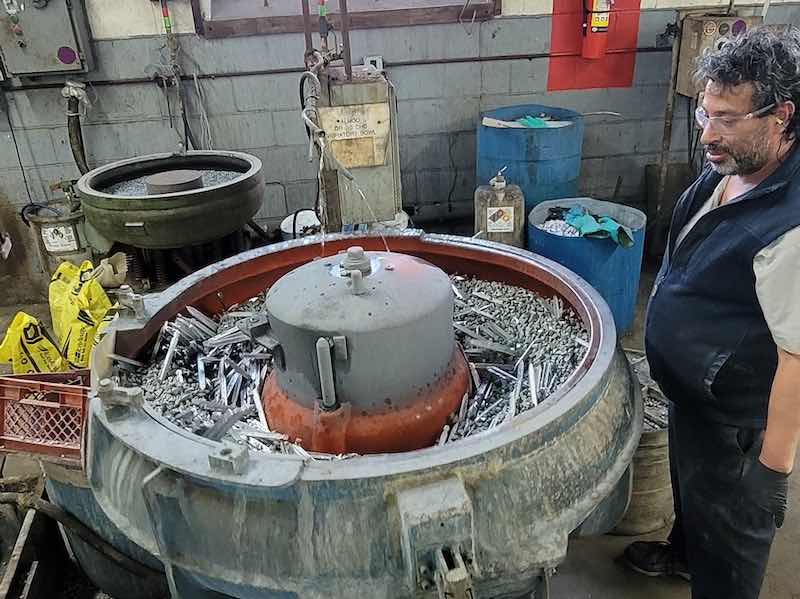Saporito Finishing’s Jeff Logan is a strong believer in the 80/20 principle of running a business.
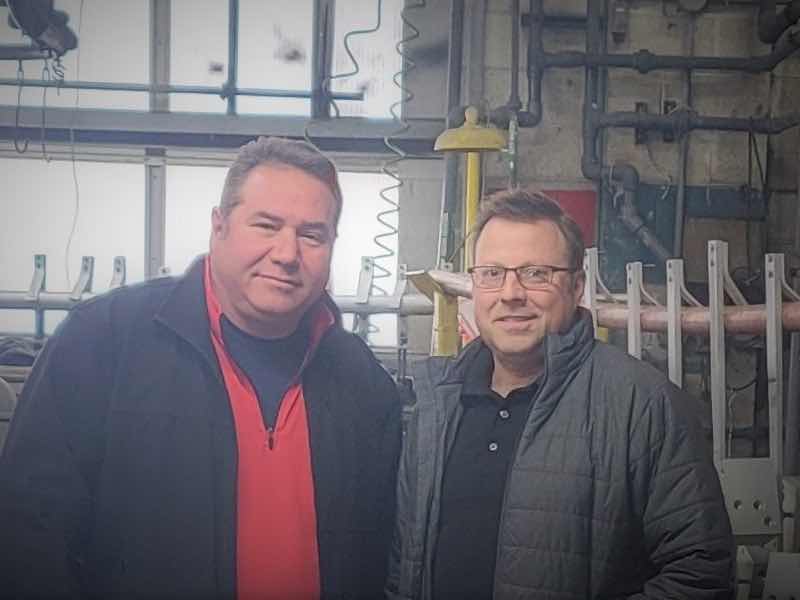 At left, President Jeff Logan with Jeff Rice, VP of Operations.That means focusing heavily on 20% of Saporito’s customers, who account for 80% of their overall revenue. Since following that business philosophy, Logan has seen dramatic changes in their plating operations.
At left, President Jeff Logan with Jeff Rice, VP of Operations.That means focusing heavily on 20% of Saporito’s customers, who account for 80% of their overall revenue. Since following that business philosophy, Logan has seen dramatic changes in their plating operations.
“It doesn’t even matter what business you’re in; it’s pretty undisputable,” says Logan, president of the Cicero, Illinois, company. “It makes you sharpen your focus and take a new look at your KPIs and gives you a better overall business analysis.”
The concept was popularized by Illinois Tool Works (ITW) executives in the early 1980s and is based on ideas from the Pareto Principle, which is named after a 19th-century Italian economist who realized through research that 20% of Italy’s population earned 80% of the income.
Logan attended a seminar in 2014 that drove home the 80/20 concept, and that is when he had an “aha” moment to work the concept into Saporito’s business model. When he had his team run their numbers, they found a striking similarity to the 80/20 rule already taking place in their finishing operations, which includes over 125,000 square feet of space for various anodizing and plating lines.
Reducing the Number of Customers Brings Greater Revenue and Profits
“We have 18 different lines, and of those, eight of them generate 80% of the revenue,” Logan says. “And then the other lines combined, the other half of the lines only generate 20% of the revenue.”
At the time they began implementation in 2015, Saporito had close to 900 active customers. Logan and his team quickly began the process of analyzing those customers to see what relationship there was between demand and revenue for each of their customers.
“So, we were servicing 222 customers and allocating all of those resources for $35,000 in sales,” Logan says. “It made no sense.”
What they found was that the bottom 25% of customers accounted for 0.4% of sales, a dreadful business proposition.
“So, we were servicing 222 customers and allocating all of those resources for $35,000 in sales,” Logan says. “It made no sense.”
That’s why at the end of 2022, Saporito Plating had just 364 customers and had a good year as far as revenue is concerned.
“We tied for our second biggest sales year ever,” Logan says.
The management and operational change wasn’t an easy thing to do for Logan and his team. The company was founded in 1946 and had a long history of servicing many Chicagoland manufacturers who came knocking.
Charles Saporito Sr. started the company, named Sun-Glo, in the basement of a store focused on military work for the war effort. It was not unusual to find Saporito and his wife wiring parts in their kitchen to prepare for the next day’s plating work. The business was eventually renamed C.J. Saporito Plating Company.
Saporito purchased Accurate Anodizing in 1956 and moved the company to the west Chicago suburb of Cicero, Illinois. In 1964, Saporito Plating added a new magnesium anodizing division. In 2001, the name of the company was officially changed to Saporito Finishing to reflect the company’s evolution of capabilities, which now included zinc plating, sulfuric and hard coat anodizing, zinc nickel plating, electroless nickel, chemical film conversion coating, and many other finishes.
From Laboratory Technician to Company President
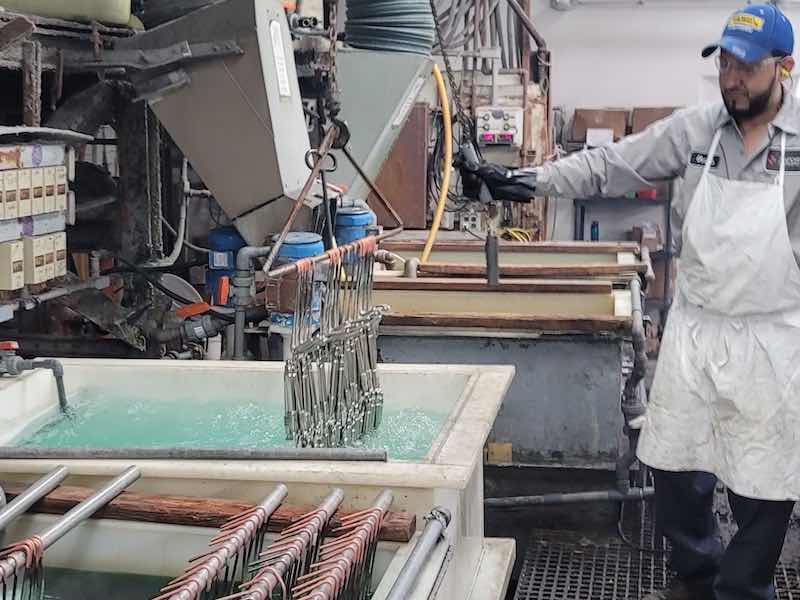 Logan joined the company in 1992 after working at an industrial coating company doing R&D on formulations. He started as a laboratory technician testing the various tanks, but soon after was moved to run an automated hoist line, and his involvement in the company grew.
Logan joined the company in 1992 after working at an industrial coating company doing R&D on formulations. He started as a laboratory technician testing the various tanks, but soon after was moved to run an automated hoist line, and his involvement in the company grew.
“I’ve held just about every position you can imagine,” Logan says.
That insight helped when he began working on implementing the 80/20 management culture at Saporito in 2015. It included developing what Logan calls “Process Simplification Teams” as well as identifying what he terms “A” customers or those who account for 80% of the business revenue.
“That is different from breaking it down by quartiles which is your top 25% of customers, then 25 to 50, 50 to 75, and on,” Logan says. “Your top quartile usually generates at least 90% of your business. And in our case, it’s almost 92%.”
“We like to tell our staff that when a call comes in from one of those ‘A’ customers, the phones ring a little bit differently,” Logan says.
After identifying those “A” customers, Logan instituted various teams to work on making sure those top customers received all the support they needed from Saporito. One of the groups Logan started was the “Raving Fans Team,” which is dedicated to closely analyzing all the top customers and making sure their needs are serviced.
“We like to tell our staff that when a call comes in from one of those ‘A’ customers, the phones ring a little bit differently,” Logan says. “And it truly does. And it’s been highly successful.”
The “Raving Fans Team” have even developed its own lexicon when it comes to dealing with Saporito’s best customers. It may be the way they answer the phone and the words they use, how they write an email to that customer, and even how they finish a conversation with those customers either on the phone or in person.
“It’s the things that you say that are appropriate phrases, while other terms and phrases that you use may be very inappropriate,” Logan says. “We do extensive training, and then we do refresher training on it too, because you start reading emails, and you’re like, ‘oops, about time for a refresher.’”
Business Flourishes Despite Diminished Staffing
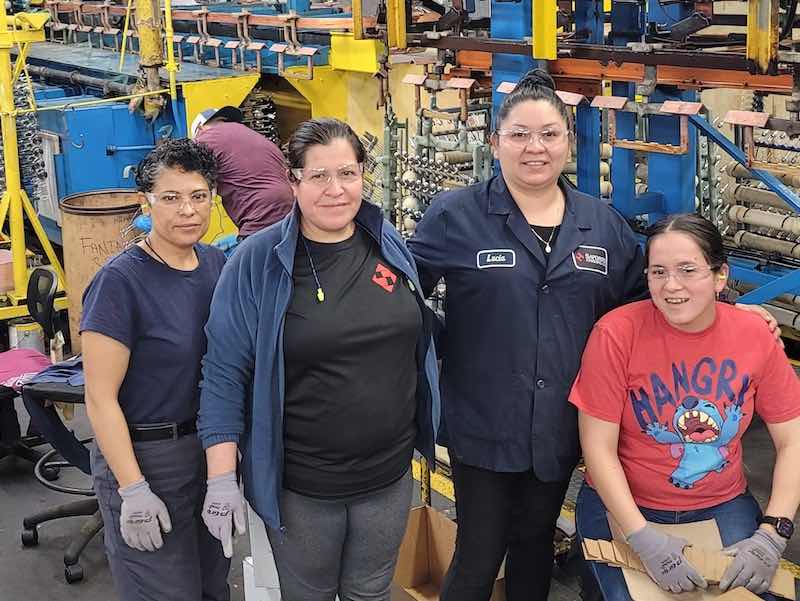 Saporito Plating has seen its business grow and flourish with a much leaner staffing operation, as has many in the manufacturing and retail sector. In 2018 it had roughly 230 employees in their various operations, and in 2022 finished the year with 170 employees, an almost 26% reduction in its workforce.
Saporito Plating has seen its business grow and flourish with a much leaner staffing operation, as has many in the manufacturing and retail sector. In 2018 it had roughly 230 employees in their various operations, and in 2022 finished the year with 170 employees, an almost 26% reduction in its workforce.
Logan says Saporito Plating interviewed over 400 people in 2022 for positions with the company after seeing turnover skyrocket from around 1% to 40% — “Everyone wants to go work for Amazon these days,” Logan says — but the changing times means that many of those who have been hired often never show up for work, or ghost the company after one or two days on the job and never come back.
Logan says it is not only difficult to find people to work with but also to even get them to show up for the job interview to which they have applied.
“Our record is 12 consecutive scheduled interviews that we had scheduled, and no one showed up,” Logan says. “But I think everyone is facing that same dilemma.”
This is why Saporito Plating has made the decision to focus on customer service with the Raving Fans Team and other groups to make the operation as efficient as possible while also being as responsive as it can be.
Aside from the Raving Fans Team, Saporito Plating also has the Target Selling Team, the Customer Simplification Team, and the Process Simplification Team.
Finding Whales and Throwing Back Minnows
The Target Selling Team was organized to study the company’s existing company base and then set out to capture similar OEMs and Tiers that fit that same mold. Logan says they are more interested in landing whales than they are minnows who might not fit the profile they are seeking.
“You just don’t want to let those minnows in,” Logan says. “So we set up gatekeeping practices to keep them out. It takes longer, and it takes more time. You can land a bluegill with a flick of a wrist, but a whale takes a team to land. This can be from identifying new customers or grabbing greater wallet share from existing customers.”
“The cost to write up a $5,000 order is the same as it is to write up a minimum order.”
Saporito Plating reviews orders on a daily and weekly basis to make sure they are maintaining that 80/20 business approach. One of the items they look at is dollars-per-order, and in 2022, they wrote the least amount of orders since 2015 but had one of the best years in sales they have ever had.
“That dollars-per-order number since we started this is up 66%,” Logan says. “The cost to write up a $5,000 order is the same as it is to write up a minimum order.”
Investing in Newer Technology and Lines
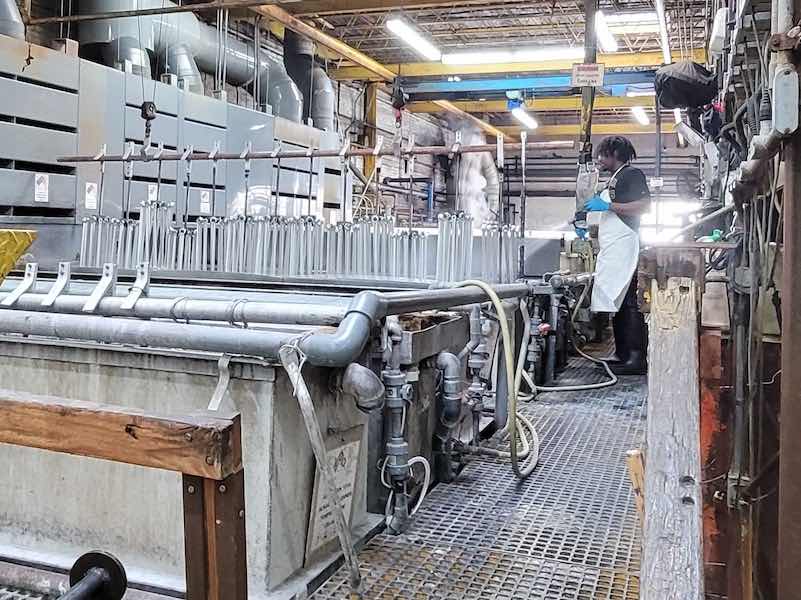 Saporito Finishing is also investing heavily in newer, more automated equipment to help alleviate the reliance on its workforce. Last year it commissioned its refurbished automatic zinc rack plating line that now features newer PLC controls and a programable computer HMI interface to allow for a wide variety of cycles to support a vast array of finishing recipes.
Saporito Finishing is also investing heavily in newer, more automated equipment to help alleviate the reliance on its workforce. Last year it commissioned its refurbished automatic zinc rack plating line that now features newer PLC controls and a programable computer HMI interface to allow for a wide variety of cycles to support a vast array of finishing recipes.
The computer system also records process information and exports the data to a database that can be reviewed anytime, anywhere, providing objective process parameter documentation in real time.
Logan says the line capacity was upgraded to 1,150 pounds, allowing for zinc plating of very heavy parts. Work bars, racks, and saddles were all redesigned and upgraded to provide greater uniformity across the entire load package reducing variation in coating thickness while improving overall plating quality.
“Several additional tanks were added to the line extending the footprint to over 100 feet,” Logan says. “Safety features were upgraded, and additional features were added to ensure the safe operation of the line and the safety of our employees, which is priority number one at Saporito Finishing.”
"You can’t argue with the success that we have had.”
Upgrades were also made on the hoists to safeguard customer hardware, including an ultrasonic carrier detection system that prevents line crashes, enhancing the protection of customer parts in the process.
The overall project came in at just under $1,000,000, but the results of the capital project include improvements in quality, repeatability, reliability, and turnaround; reduced downtime for repairs and maintenance; increased capacity to support the growth of our customers.
“The irony is that line we upgraded was the first line I ran when I started here in 1992,” Logan says.
Saporito has upgraded or added five new automated lines in the last 15 years.
Logan adds that the way Saporito Finishing is running its business operations is much different than when Charles Saporito first started the business and even more different from how they were running it 10 years ago.
“One of our salesmen told me as we began the emotional process implementation that Sr would be rolling in his grave right now if he knew what we were doing,” Logan says. “But you can’t argue with it. You can’t argue with the success that we have had.”





